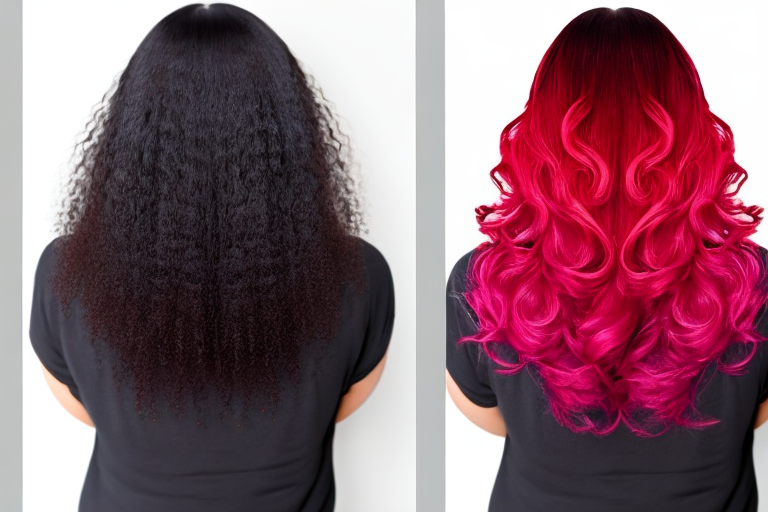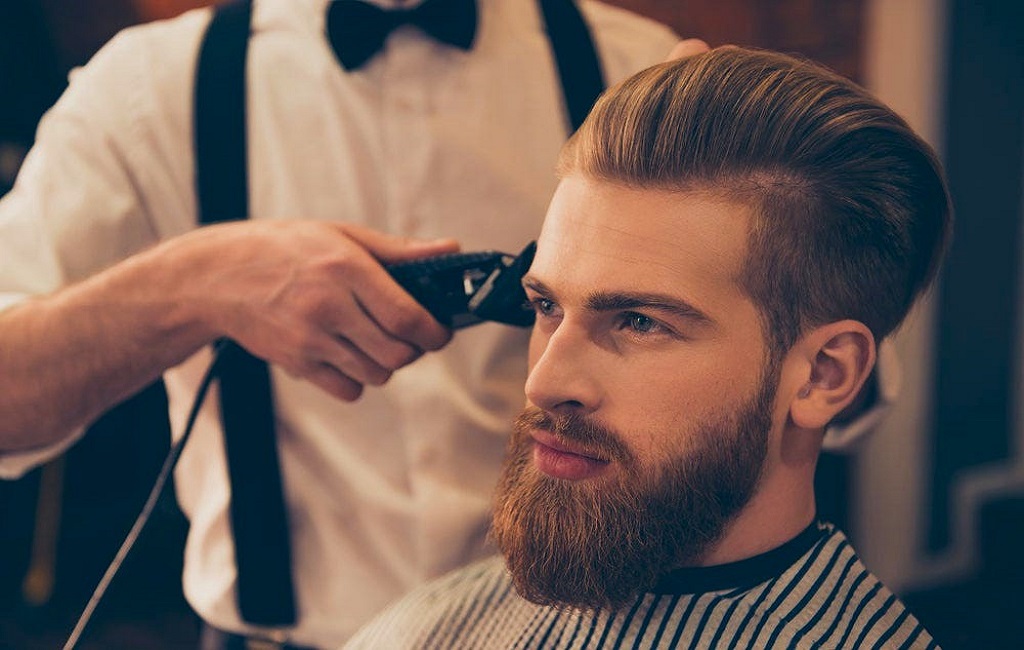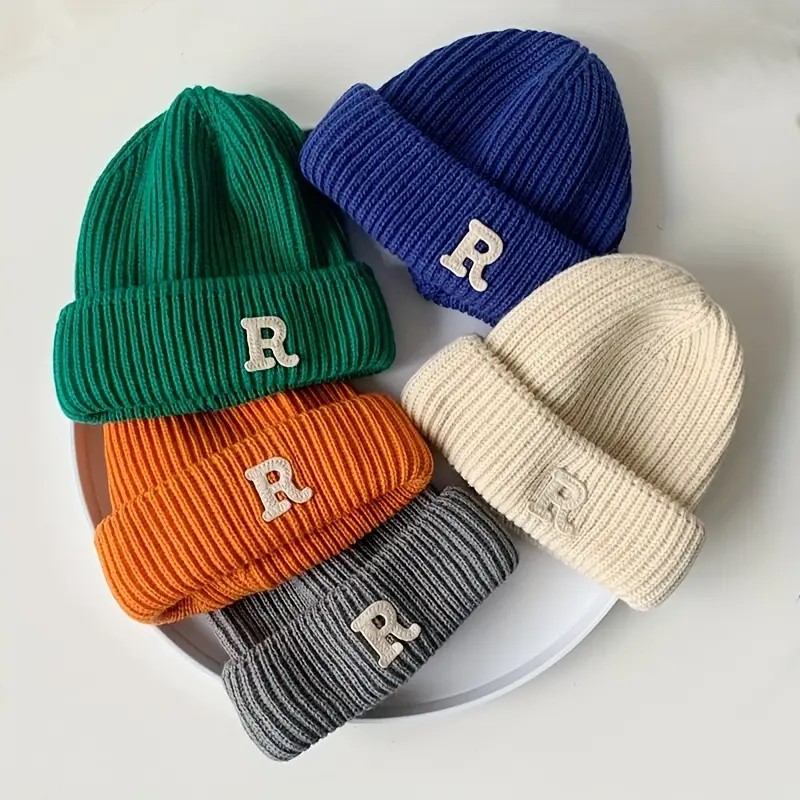Attention, hair enthusiasts! Are you caught in a conundrum of color and curls? You’ve recently embraced the allure of dyeing your hair, but now you’re yearning for a fabulous set of curls. The burning question on your mind is, i dyed my hair 2 weeks ago can i perm it. Fear not, for we’re here to unravel this hair mystery and guide you toward your desired mane transformation. In this article, we’ll explore the compatibility of perming with dyed hair, addressing the doubts surrounding perming and dyed hair. So, if you’ve ever wondered, “Can you perm dyed hair?” or “Can you perm colored hair?” or “Can you get a perm with dyed hair?” Stay tuned as we embark on this captivating hair journey together!
The Basics of Hair Coloring and Perming
To better comprehend the compatibility of hair coloring and perming, let’s first differentiate between these two processes and understand the chemical mechanisms involved. By exploring their impact on hair structure and texture, we can gain insights into the potential risks and benefits.

Differentiating Hair Coloring and Perming
Hair coloring involves the application of various dyes to alter the hair’s color. It can be done using temporary, semi-permanent, or permanent dyes, each with different levels of longevity. If you’re planning to wear your hair down to Jury Duty, then you might want to consider a more natural-looking color that won’t draw too much attention. On the other hand, perming focuses on altering the hair’s natural shape and texture, creating curls or waves that are either permanent or semi-permanent.
The Chemical Processes Involved
Hair coloring relies on the chemical interaction between the dyes and the hair’s natural pigments. Different types of hair dyes, such as oxidative and direct dyes, work through various mechanisms to achieve color transformation. Perming, on the other hand, utilizes chemical solutions to break and reform the hair’s internal bonds, allowing the creation of new curl or wave patterns.
Impact on Hair Structure and Texture
Both hair coloring and perming processes can affect the hair’s structure and texture. Hair coloring involves opening the hair cuticles to deposit pigments, which can slightly weaken the hair strands. Perming, on the other hand, alters the protein structure within the hair, resulting in a change in texture and, in some cases, increased vulnerability.
The Wait: How Long to Wait Before Perming Dyed Hair
After coloring your hair, it’s essential to give it time to recover and stabilize before introducing another chemical treatment like perming. Several factors influence the waiting period, including your hair type and texture, the type of dye used, overall hair health, and any previous chemical treatments.

Factors Affecting the Waiting Period
Different hair types and textures react differently to chemical treatments. Fine or delicate hair may require more time to recover from the coloring process before perming, while coarse or resilient hair may bounce back more quickly.
Hair Color and Dye Type
The color of your hair and the type of dye used also play a role in determining the waiting period. Lighter hair colors typically undergo more significant chemical changes during the coloring process, necessitating a longer recovery period before perming.
Overall Hair Health
The overall health of your hair is an important consideration. If your hair is already damaged, brittle, or excessively dry, it’s crucial to focus on repairing and nourishing it before introducing additional chemical treatments.
Previous Chemical Treatments
If you’ve recently undergone other chemical treatments, such as relaxing or straightening, it’s important to account for their impact on your hair’s condition. These treatments can affect the hair’s resilience and alter the waiting period for perming.
General Guidelines for Waiting Periods
While individual circumstances may vary, here are some general guidelines to consider when determining how long to wait before perming dyed hair:
Lighter Hair Colors
If you’ve opted for a lighter hair color, especially if it involved bleaching or lightening the hair, it’s advisable to wait at least four to six weeks before perming. This waiting period allows the hair to recover and regain strength after the color treatment.
Darker Hair Colors
For darker hair colors, which typically involve less drastic chemical changes, waiting for around two to three weeks before perming can be sufficient. However, it’s important to assess your hair’s condition and consult with a professional stylist for personalized advice.
Bleached or Pre-Lightened Hair
If your hair has been bleached or pre-lightened significantly, it’s essential to prioritize hair health and allow ample time for recovery. Waiting for at least six weeks or longer is generally recommended to minimize the risk of damage during the perming process.
Semi-permanent vs. Permanent Hair Dye
If you’ve used a semi-permanent hair dye, which typically lasts for a shorter duration, you may need to wait for a shorter period before perming. Around two weeks of recovery time should be sufficient in most cases. However, if you’ve used a permanent hair dye, it’s advisable to follow the waiting guidelines for your specific hair color.
Can You Get a Perm with Dyed Hair?
Now that we’ve discussed the waiting period, let’s address the burning question: Can you get a perm with dyed hair? The answer is yes, but it depends on various factors, including your hair’s current condition and overall health.

Perm Compatibility with Dyed Hair
Perming can be compatible with dyed hair, provided your hair is in good condition and sufficiently recovered from the coloring process. It’s essential to assess your hair’s texture, strength, and elasticity to ensure it can withstand the chemical process involved in perming.
Assessing Hair Condition for Perming
Before proceeding with a perm on dyed hair, consider the following factors to assess your hair’s condition:
Hair Texture and Type
Different hair textures and types react differently to perming. If your hair is already naturally curly or prone to dryness, you may need to exercise caution and consult a professional stylist for personalized advice.
Strength and Elasticity
Healthy hair is resilient and has good elasticity. If your hair feels weak, brittle, or lacks elasticity, it’s advisable to focus on restoring its strength before considering a perm.
Signs of Damage or Breakage
Carefully examine your hair for signs of damage or breakage, such as split ends or excessive hair fall. If your hair is already compromised, it’s best to prioritize its recovery before introducing additional chemical treatments.
Consulting a Professional Stylist for Advice
To ensure the best results and minimize the risk of damage, it’s highly recommended to consult a professional stylist before perming dyed hair. A skilled stylist can assess your hair’s condition, understand your desired outcome, and provide personalized recommendations based on your unique circumstances.
Balancing Hair Health: Perming and Coloring
Balancing hair health while undergoing both perming and coloring treatments is crucial for achieving the desired results without compromising the integrity of your hair. Let’s explore some techniques to minimize potential damage and maintain healthy, beautiful hair.

Understanding the Impact on Hair Health
Overlapping chemical treatments, such as perming and coloring, can potentially lead to increased hair damage. Understanding this impact is key to taking appropriate measures to minimize the risk.
Overlapping Chemical Treatments
The repeated use of chemical treatments can place stress on the hair, potentially leading to excessive dryness, breakage, or loss of vibrancy. It’s important to be mindful of the cumulative effect of these treatments and ensure sufficient intervals between them.
Potential Damage from Dual Processing
Dual processing, where both perming and coloring are done on the same day or within a short time frame, can intensify the stress on the hair. This can result in compromised hair health and undesirable outcomes. It’s advisable to avoid dual processing and allow ample time for recovery between treatments.
Techniques to Minimize Hair Damage
Fortunately, there are strategies you can employ to minimize hair damage and maintain healthy locks while perming and coloring your hair.
Strengthening Hair Before Treatment
Prior to undergoing any chemical treatment, it’s beneficial to strengthen your hair by incorporating a nourishing hair care routine. Deep conditioning treatments, protein masks, and moisturizing products can help improve your hair’s resilience and minimize potential damage.
Choosing Gentler Perm Formulas
When selecting a perm formula, opt for milder formulations that are specifically designed for colored or chemically treated hair. These formulas are typically gentler on the hair and can help minimize the risk of damage during the perming process.
Using Conditioning Treatments and Masks
Regular use of conditioning treatments and masks can provide much-needed moisture and nourishment to your hair. Look for products that are formulated for chemically treated hair to help maintain its health and vitality.
The Ideal Sequence: Hair Coloring After Perming

While many individuals wonder about perming after coloring, it’s equally important to consider the sequence of treatments when coloring after perming. Here, we’ll explore the safe timeframe for coloring after a perm and the factors to consider before introducing color to your newly permed hair.
Safe Timeframe for Coloring After a Perm
After perming your hair, it’s generally advisable to wait for a few weeks before introducing any additional chemical treatments, such as hair coloring. This waiting period allows the hair to stabilize and recover from the perming process.
Factors to Consider Before Coloring
When the time is right to color your newly permed hair, there are several factors to consider to ensure a successful outcome.
Perm Type and Technique
The type of perm you’ve chosen and the technique used can influence how your hair will react to subsequent coloring treatments. Different perm types, such as cold perms or digital perms, may have varying degrees of compatibility with hair coloring.
Hair Texture and Porosity
Perming can alter the hair’s texture and porosity, which can, in turn, affect how it absorbs and retains color. Understanding your hair’s characteristics and porosity levels can help you select the appropriate coloring techniques and products for optimal results.
Color Selection and Desired Result
When choosing a hair color after perming, consider how it will complement your newly acquired texture and curl pattern. Selecting the right color and shade can enhance the overall appearance and create a harmonious blend between the curls and the color.
Protecting and Maintaining Permed Hair Color
Once you’ve colored your permed hair, it’s crucial to adopt a color-safe hair care routine to preserve the vibrancy and longevity of the color.
Color-Safe Shampoos and Conditioners
Invest in shampoos and conditioners specifically formulated for colored hair. These products are designed to minimize color fading, maintain moisture balance, and provide UV protection.
UV Protection and Heat Styling Precautions
Exposure to sunlight and heat styling tools can cause color fading and damage to permed hair. Protect your hair by using UV-blocking hair products and minimizing heat styling whenever possible. Opt for heat-free styling techniques that accentuate your natural curls.
Potential Risks and Precautions
While perming dyed hair can be a rewarding experience, it’s important to be aware of potential risks and take necessary precautions to avoid undesirable outcomes.
Chemical Sensitivity and Allergies
Before undergoing any chemical treatments, including perming and coloring, it’s essential to be mindful of potential chemical sensitivities and allergies. Conduct a patch test to determine if you’re sensitive to any of the products to be used.
Patch Testing for Sensitivity
Perform a patch test by applying a small amount of the perming or coloring product behind your ear or on a discreet area of your skin. Follow the manufacturer’s instructions and wait for the recommended time to observe any adverse reactions.
Risks of Allergic Reactions
In rare cases, individuals may experience allergic reactions to the chemicals used in perming or coloring. If you notice any signs of itching, redness, or swelling, immediately rinse the product off and seek medical advice.
Damages of Perming Colored or Bleached Hair
Perming hair that has already been colored or bleached can potentially exacerbate damage and lead to unwanted outcomes. It’s important to be aware of the risks associated with perming previously chemically treated hair.
Overprocessing and Hair Breakage
Overprocessing the hair through multiple chemical treatments can weaken its structure, leading to breakage and loss of elasticity. Exercise caution when perming already colored or bleached hair and consult a professional stylist for personalized guidance.
Loss of Color Vibrancy
Perming can cause the hair cuticles to open, leading to color fading over time. If color vibrancy is a top priority, it’s advisable to delay perming until after you’ve achieved the desired color and allowed the hair to stabilize.
Uneven Color Distribution
Perming can alter the porosity of the hair, which may result in uneven color distribution. This is particularly noticeable in hair that has been previously colored or bleached. Consider these factors when deciding on the appropriate timing for perming and coloring your hair.
Tips for Perming Dyed Hair Successfully

To ensure a successful perming experience on dyed hair, here are some valuable tips to keep in mind:
Seeking Professional Help
While it’s tempting to attempt perming at home, seeking professional help is highly recommended, especially when dealing with dyed hair. An experienced stylist can assess your hair’s condition, guide you through the process, and minimize the risk of potential damage.
Finding an Experienced Stylist
Research and find a reputable stylist with experience in perming and working with dyed hair. Reading reviews, seeking recommendations, and scheduling a consultation can help you find the right professional for your needs.
Consultation and Communication
During the consultation, clearly communicate your desired outcome, concerns, and any previous chemical treatments you’ve undergone. This information will enable the stylist to provide personalized advice and tailor the perming process accordingly.
Preparing Your Hair for Perming
Proper hair preparation is essential to minimize the risk of damage during the perming process. Follow these steps before perming your dyed hair:
Deep Conditioning and Moisturizing
In the weeks leading up to your perming appointment, prioritize deep conditioning and moisturizing treatments to enhance your hair’s health and elasticity. Well-hydrated hair is better equipped to handle chemical processes.
Avoiding Other Chemical Treatments
To minimize stress on your hair, avoid other chemical treatments, such as relaxing, straightening, or additional coloring, leading up to your perming session. Give your hair time to recover and restore its natural balance.
Aftercare for Permed and Dyed Hair
Proper aftercare is crucial for maintaining the health and longevity of your permed and dyed hair. Follow these tips to ensure optimal results:
Gentle Cleansing and Conditioning
Use gentle, sulfate-free shampoos and conditioners specifically formulated for permed and colored hair. Avoid harsh ingredients that can strip away moisture and compromise the longevity of your perm and color.
Regular Trims to Maintain Hair Health
Regular trims are essential for keeping your permed and colored hair in optimal condition. Trimming off split ends and preventing further damage will contribute to healthier, more vibrant-looking hair.
Styling Options for Permed and Colored Hair
Once you’ve successfully permed and colored your hair, it’s time to embrace your new texture and explore styling options that complement your unique look.
Perming and coloring your hair opens up a world of styling possibilities. Embrace your new texture and color with confidence, as they are an expression of your personal style and individuality.
Hairstyles to Complement Permed Hair
Permed hair offers versatility when it comes to hairstyles. Consider embracing loose waves, voluminous curls, or romantic updos that accentuate the beauty of your permed hair.
Styling Products for Enhancing Curls and Color
Utilize styling products specifically formulated for curly hair to enhance the definition and longevity of your curls. Additionally, explore color-enhancing products designed to maintain and revive the vibrancy of your hair color.
Conclusion
Perming your hair after coloring it two weeks ago is indeed possible, but it requires careful consideration and proper hair care. If you’re wondering, “I dyed my hair 2 weeks ago can I perm it?” the answer is yes, but you need to wait for the appropriate period, assess your hair’s condition, and seek professional guidance. By doing so, you can achieve the desired results while maintaining the health and beauty of your hair. Remember to prioritize hair health, communicate with your stylist, and celebrate the versatility of permed and colored hair.
FAQs (Frequently Asked Questions)
- Can I perm my hair immediately after coloring it?
No, it’s generally recommended to wait for a few weeks after coloring your hair before perming it. This waiting period allows your hair to recover and stabilize after the coloring process.
- Will perming damage my colored hair?
Perming can potentially weaken the hair, especially if it has already been colored. However, with proper care and preparation, you can minimize the risk of damage and maintain healthy, vibrant hair.
- How long should I wait before coloring my permed hair?
After perming your hair, it’s advisable to wait for a few weeks before introducing additional chemical treatments, such as hair coloring. This waiting period allows your hair to stabilize and recover from the perming process.
- Can I color my permed hair at home?
While it’s possible to color permed hair at home, it’s recommended to seek professional help, especially if you’re dealing with dyed hair. A professional stylist can assess your hair’s condition, provide personalized advice, and ensure the best possible outcome.
- How can I maintain the health of my permed and colored hair?
To maintain the health of your permed and colored hair, use color-safe shampoos and conditioners, deep condition regularly, minimize heat styling, and avoid harsh chemical treatments. Regular trims and a nourishing hair care routine are also essential for optimal hair health.




